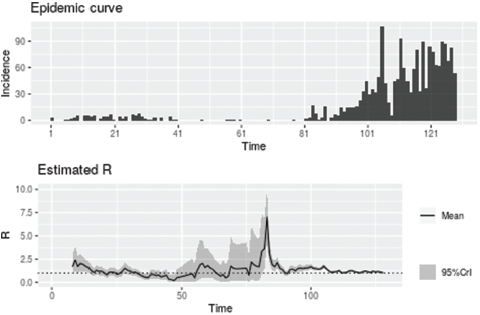Canton Sarajevo journey through COVID-19 pandemic
DOI:
https://doi.org/10.17532/jhsci.2020.1031Keywords:
Coronavirus, Public Health, Lockdown Measures, Infection control, LockdownAbstract
Introduction: Sarajevo is the capital city of Bosnia and Herzegovina, with the population in Canton Sarajevo of 438,443 people. The first cases of COVID-19 in Canton Sarajevo were on 20th March. On that day, we had three positive cases. These days at the beginning of the COVID-19 epidemic in Canton of Sarajevo around 2500 citizens were in self-isolation at home. The aim of this paper is to show the journey of Canton Sarajevo in the fight against COVID-19 infection, the impact of measurements that were taken to stop the infection spreading and to compare pre- and post-lockdown stats.
Methods: During the period March-July 2020, we have analyzed daily newly cases and followed them through the period of at least 14 days. All data were analyzed using SPSS 25.0 (IBM Corp. Released in 2019. IBM SPSS Statistics for Windows, NY: IBM Corp.) and MS Office 2019 suite (Excel). For comparison, we have used the Chi-square test.
Results: In the period of 10 weeks from the beginning of March to the 25th of May in Canton of Sarajevo, we had a total of 113 cases of COVID-19 infection. The number of conducted tests was 7515. In total, with positive retests, we had only 161 positive tests, which is 2.14% of all analyzed tests. From that number of patients, 58 (51.3%) were male and 55 (48.7%) were female. Regarding age distribution, under 65 years were 91.1% of patients.
Conclusion: Choosing the best method to fight against COVID-19 is hard to determine. Staying at home would decrease the infection rate, but in the long term, it is not sustainable. Perhaps the mix of methods that we had in Sarajevo is the best option. Fighting against one epidemic cannot be the source for other epidemics.
Downloads

Downloads
Published
License
Copyright (c) 2020 Anes Jogunčić, Aida Pilav, Anisa Bajramović, Snežana Bursač-Aranđelović, Aida Pošković-Bajraktarević, Emina Kurtagić-Pepić, Aida Pitić, Zinka Šeremet, Denis Đurović, Suada Branković

This work is licensed under a Creative Commons Attribution 4.0 International License.










